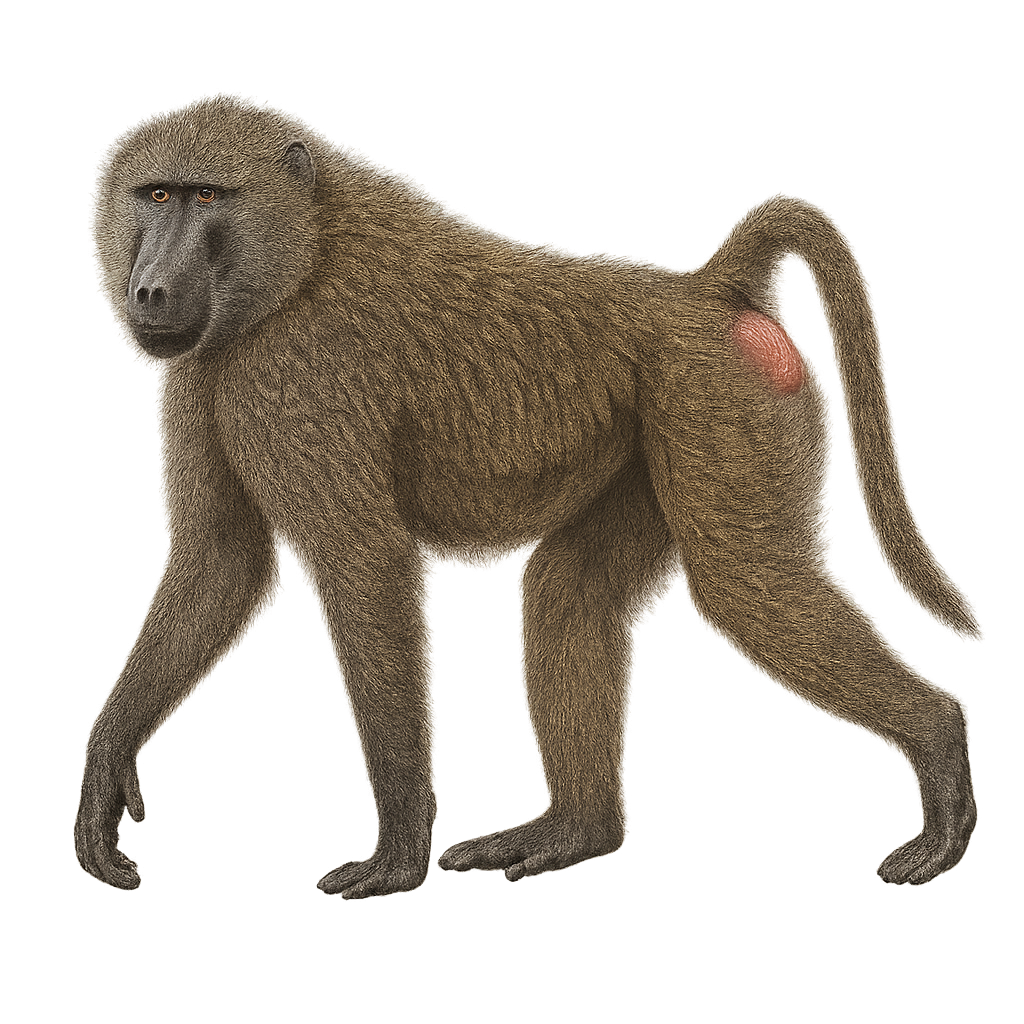Your wildlife photography guide.
Explore the olive baboon in detail, study its behavior, prepare your shots.
Where to observe and photograph the olive baboon in the wild
Learn where and when to spot the olive baboon in the wild, how to identify the species based on distinctive features, and what natural environments it inhabits. The WildlifePhotographer app offers tailored photography tips that reflect the olive baboon’s behavior, helping you capture better wildlife images. Explore the full species profile for key information including description, habitat, active periods, and approach techniques.
Olive Baboon
Scientific name: Papio anubis

IUCN Status: Least concern
Family: CERCOPITHECIDAE
Group: Mammals
Sensitivity to human approach: Suspicious
Minimum approach distance: 10 m
Rut period: September to October
Gestation: 170-180 jours
Births: February to April
Habitat:
Savannas, tropical forests, wooded areas
Activity period :
Primarily active during the day, with peak activity in the morning and late afternoon.
Identification and description:
The olive baboon, or Papio anubis, is a robust and adaptable primate widely distributed in sub-Saharan Africa. It is characterized by its olive-green coat, powerful limbs, and elongated snout. Males are significantly larger than females, weighing up to 30 kg. These baboons live in complex social groups of up to 150 individuals, where hierarchy is crucial. As opportunistic omnivores, they feed on fruits, seeds, insects, and small animals. Their habitat ranges from savannas to tropical forests, demonstrating great adaptability. Although their status is currently "least concern," deforestation and hunting pose potential threats.
Recommended lens:
400 mm – adjust based on distance, desired framing (portrait or habitat), and approach conditions.
Photography tips:
To photograph the olive baboon, prioritize early morning or late afternoon for soft lighting. Use a telephoto lens of at least 400mm to capture detailed portraits without disturbing the animal. Be patient and observe the group's behavior to anticipate interesting interactions. Discretion is key to avoid scaring them. Opt for burst mode shots to capture quick movements. Finally, always respect the 10 m safety distance to ensure your safety and that of the animals.
The WildlifePhotographer App is coming soon!
Be the first to explore the best nature spots, track rutting seasons, log your observations, and observe more wildlife.
Already 1 450 wildlife lovers subscribed worldwide

